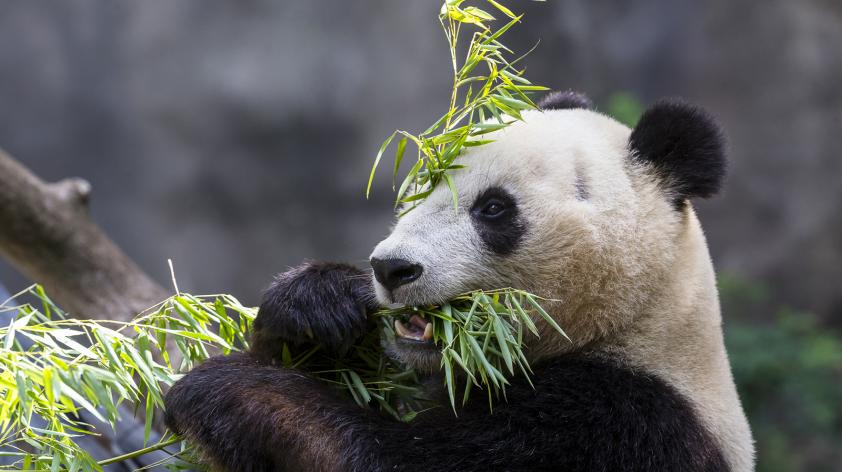
The giant panda is no longer endangered
Something like this comes along once in a lifetime if you’re lucky. You put years of effort into something (I’ve spent almost half my life working on pandas!) and you dream it will someday pay off. This is just one of those moments. The giant panda is, officially, no longer endangered!
I of course cannot claim credit for this milestone, but I hope my efforts have made some positive contributions. I can’t count how many times I have flown across the Pacific Ocean to work with my Chinese friends and colleagues. I also can’t count how many hours I’ve spent collecting data on pandas, often in very cold inclement weather. Thus, my reaction to this revelation is personal and visceral.
How did the panda come to be “downlisted”? The panda of course has iconic status, and is perhaps the world’s most recognized Endangered Species. Now, according to all the criteria that establish how “Threatened” a species is, they are merely “Vulnerable.” Working with my Chinese colleagues and co-authors, I recently put the panda through IUCN’s criteria and found that the panda no longer meets the criteria for threatened. IUCN, the International Union for Conservation of Nature, has strict and well-articulated guidelines for determining a species’ status. With panda numbers in the wild going up and with habitat expanding, thanks to many protective measures established by the Chinese government, the panda does not pass the Endangered Species test. What a good thing to fail at!
After the downlisting decision late last year, as you might imagine, there was a lot of dialogue. Some were excited, but many were also worried. Would we now stop trying to conserve the panda? I certainly hope not, and that is not the intent of the decision. Think of it this way: if you have just left the hospital following heart bypass surgery, would you still want to continue to take your meds, see your doctor, watch your diet, and get exercise? The panda is recovering, not recovered! Time to roll up our sleeves and get back to work. If you’re interested, you can read our reply and in-depth evaluation of the broader meaning of the decision to downlist in our article, Panda downlisted but not out of the woods, in the journal Conservation Letters (it’s free here: http://onlinelibrary.wiley.com/doi/10.1111/conl.12355/full).
From this result we can take great hope: hope that the panda will keep on its path to recovery, hope that the Chinese government and conservation community continue to help protect pandas, and hope that our efforts in endangered species conservation really do make a difference. That’s a lot of hope. I hope we are not someday disappointed. But for now we can rejoice: the panda is in a better place than it was 20-some years ago when I first began my relationship with pandas.













